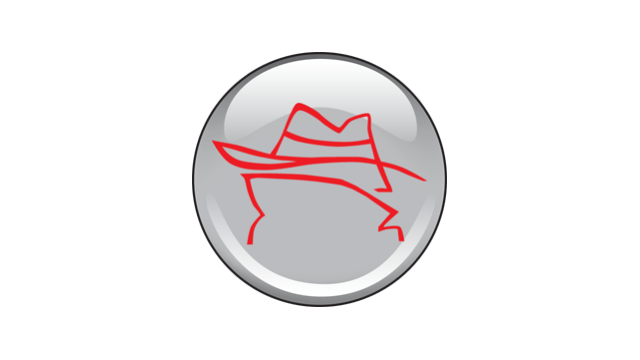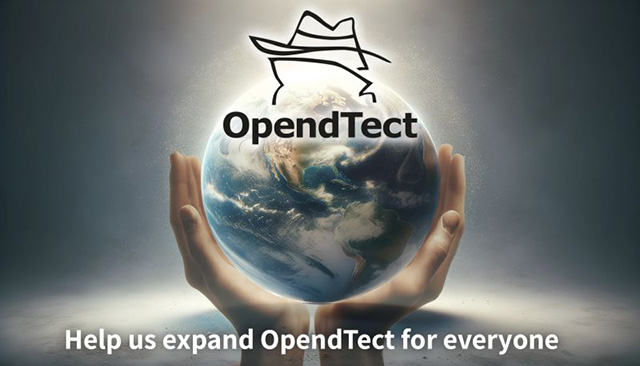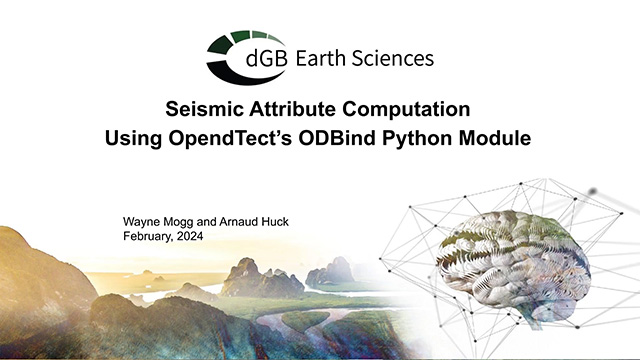Blog

OpendTect Patch Release 7.0.8
- Written by: Arnaud Huck
Dear OpendTect Users,
We have made a patch release for our latest stable version: OpendTect 7.0.8, which is now available for installation/update.

OpendTect Patch Release 7.0.7
- Written by: Arnaud Huck
Dear OpendTect Users,
We have made a patch release for our latest stable version: OpendTect 7.0.7, which is now available for installation/update.

OpendTect Patch Release 7.0.6b
- Written by: Arnaud Huck
Dear OpendTect Users,
We have made a patch release for our latest stable version: OpendTect 7.0.6b, which is now available for installation/update. This release is a very minor incremental update as compared to OpendTect 7.0.6.

OpendTect Patch Release 7.0.6
- Written by: Arnaud Huck
Dear OpendTect Users,
We have made a patch release for our latest stable version: OpendTect 7.0.6, which is now available for installation/update. This patch release of OpendTect Pro is the first with compatibility with Petrel 2024.1. Please refer to this webpage for the installation of the corresponding Petrel plugin.

Free webinar: Past, Present, and Future of AI in Seismic Studies
- Written by: Marieke van Hout
I am excited to share that Dr. Paul de Groot and I will be presenting a webinar titled "Past, Present, and Future of AI in Seismic Studies" on 23 May 2024 at 18:30 PM CET.
Read more: Free webinar: Past, Present, and Future of AI in Seismic Studies

OpendTect Patch Release 7.0.5
- Written by: Arnaud Huck
Dear OpendTect Users,
We have made a patch release for our latest stable version: OpendTect 7.0.5, which is now available for installation/update.

Expanding OpendTect for Everyone
- Written by: Marieke van Hout
Just a few months back, we embarked on a mission with a focused funding campaign for a new, innovative feature in OpendTect. Thanks to the incredible support and pledges from our community, we're inspired to broaden our horizons. We're now transitioning to a more inclusive campaign, inviting everyone to contribute. Your donations are pivotal in driving the continuous expansion of OpendTect, ensuring it remains a cutting-edge tool in geosciences across both academic and corporate realms.
Why Contribute?

Seismic Attribute Computation by the WMPlugin's External Attribute Plugin is Now Available for Viewing
- Written by: Marieke van Hout
Following the overwhelming response to our previous webinar, where Wayne Mogg, an OpendTect power user and coding guru, showcased the intricacies of using ODBind for seismic attribute calculations, we're thrilled to present the next chapter in this enlightening journey.
In this second installment, Wayne focuses on harnessing the power of Python in OpendTect, facilitated by the innovative WMPlugins external attribute plugin.

Seismic Attribute Computation Using OpendTect’s ODBind Python Module
- Written by: Marieke van Hout
The recording of our recent webinar featuring Wayne Mogg, an esteemed OpendTect power user and programming expert and our Chief Technology Officer Arnaud Huck, is now available for viewing!
Here's what you'll discover in the recording:
Read more: Seismic Attribute Computation Using OpendTect’s ODBind Python Module